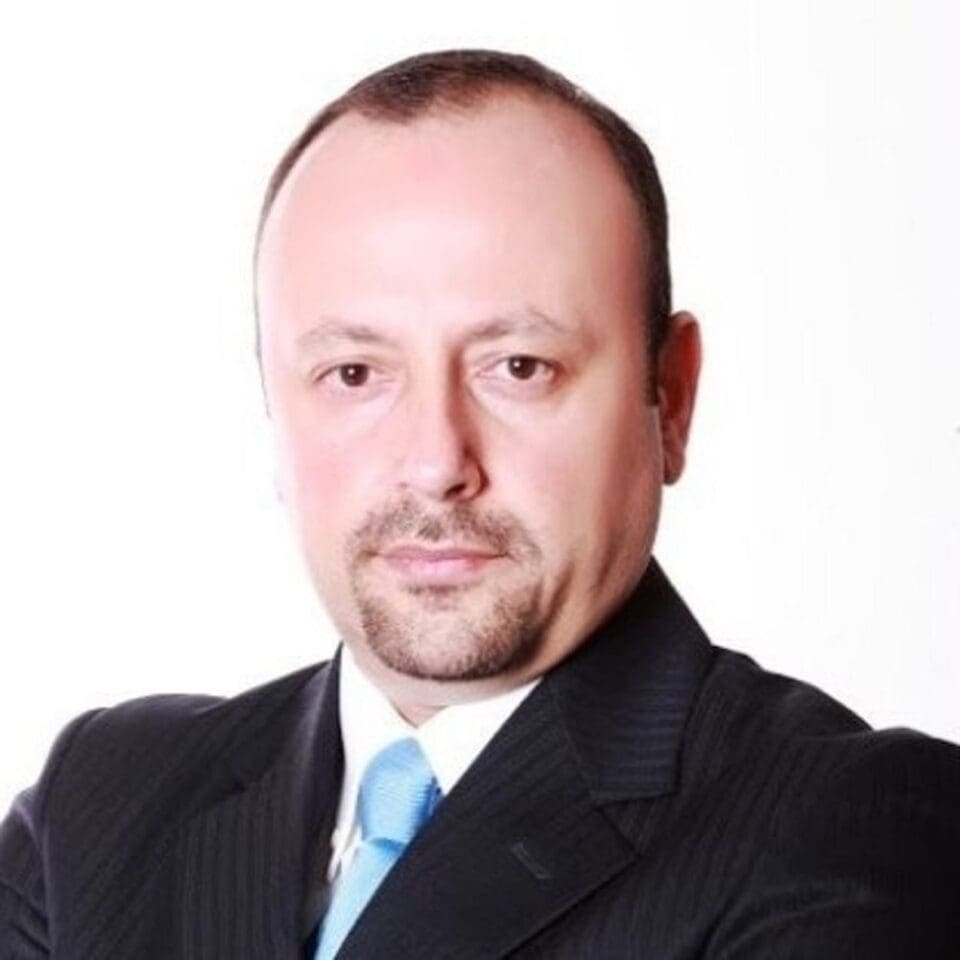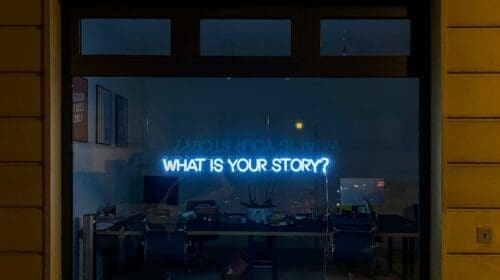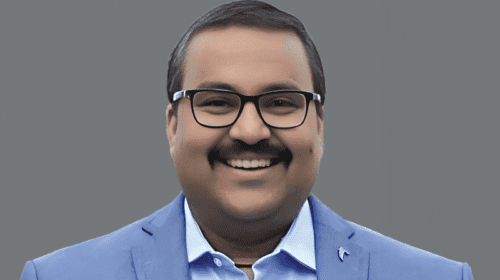Emmanuel Sullivan: Tell us a little bit about your current (or latest) position and what you do, as well as how you found a job.
Sedat Kilic: I am currently a Senior Mechanical Engineer and Project Manager for one of the world’s largest oilfield services companies. In this role, I apply my expertise in computer-aided design (CAD), planning, manufacture, cost control, testing, training, implementation, and risk mitigation to leading new product development for next generation drilling tools, and have been responsible for multiple patented new technologies that improve efficiency in various oil and gas industry processes. I am also responsible for using agile methodologies to oversee very complex, multimillion-dollar O&G engineering and technology projects around the world. My position leverages my skills in engineering—I am the system architect in developing many mechanical tool architectures—as well as my business and leadership skills, which are necessary to lead teams and keep people and projects on time and on schedule.
I earned my bachelor’s and master’s degrees in mechanical engineering in the early 1990s from Middle East Technical University in my native Turkey. My academic focus was on the Computer Aided Design of Hydrodynamic Bearings and Computer-Aided Selection of Rolling Bearings, and as a teaching and research assistant, I also taught classes in Machine Elements and Quality Control, among others. My early engineering endeavors commenced at a multinational household appliances manufacturer located in Ankara, Turkey, where I served as a manufacturing and design engineer for four years. Within this role, I held responsibilities for the upkeep of assembly lines and automated technologies essential for the mass production of household appliances. Concurrently, I engaged in the design of fixtures and equipment crucial for sustaining the manufacturing process. Subsequently, I ventured to the United States to pursue a second Master of Science degree in the School of Mechanical and Aerospace Engineering at Oklahoma State University. During this period, I conducted research focused on semiconductor materials utilizing advanced technologies such as atomic force microscopy (AFM) and scanning electron microscopy (SEM). Continuing my academic journey, I pursued further education at the University of Oklahoma School of Industrial Engineering while concurrently serving as a graduate research assistant. This journey culminated in the attainment of my PhD in 2006.
With this strong technical background, I became a Design for Manufacturing (DfM) engineer with my current employer, where I have built my nearly 20-year career, which has included working and problem-solving with coring and wireline tools and resistivity in reservoir characterization, Logging While Drilling tools, artificial/gas lifts in production, land rigs in drilling, and next gen drilling tools, and as an engineering consultant relative to asset line management and project staffing, before my promotion to Project Manager, working globally.
ES: What inspired you to start a career in the oil and gas industry?
SK: It feels like yesterday, but it has been 18 years since I joined the O&G industry. There are many motivating factors that attract individuals to select this industry, but for me, three factors inspired me to pursue my career in O&G. First and foremost is technological challenges. The O&G industry is at the forefront of technological innovation, particularly in areas such as exploration, drilling, and extraction. The industry presents exciting challenges and opportunities to apply my engineering skills. The general conception of an oil company for someone outside the industry is that we dig holes in the ground and pump oil up. But this is a very simplified outlook – in fact it is an extremely complicated and complex industry, which requires high technology tools and equipment, safe processes, and competent people. As an engineer with both academic and industry experience, I wanted to apply my skills passionately to solve complex problems and provide engineering solutions to unleash the energy harnessed deep underground. Designing and adapting tools to cope with the stringent requirements of deepwater reservoirs in high pressure/high temperature environments excited me and enabled me to fulfill my engineering enthusiasm.
The second factor is the global impact of the O&G industry, which is a major part of the energy market and plays an influential role in powering economies and meeting energy demands worldwide. I have been motivated by the opportunity to contribute to global energy security and play a role in shaping the future of energy production.
Lastly, the O&G industry offers lucrative career opportunities with high salaries and benefits, and that also attracted me. I additionally realized that there are many opportunities to grow both in technical and non-technical roles in multinational companies with global footprints, and to work with diverse and competent energy professionals in this progressive industry.
ES: How are some of the drilling technology innovations you’ve developed improving efficiencies for the industry?
SK: My career has included at least a dozen inventions that have led to patented technologies, as well as overseeing many challenging projects that have added value to my company and its clients, so I am proud to have many significant achievements that have positively impacted the global energy industry. One current project that stands out is a well construction measurement program in which, under my leadership, our team developed a highly advanced tool to facilitate real-time, high-speed telemetry and communication between downhole tools and the Wired Drill Pipe network and surface systems.
Utilizing this tool and advanced data analytics, operators can obtain high quality data faster, monitor drilling operations in real-time and make informed decisions to optimize performance. Real-time data analysis enables proactive drilling parameter adjustments, geosteering for optimal reservoir targeting, and early detection of drilling hazards, leading to improved efficiencies and reduced costs. In addition to the overwhelming internal acclaim that these new tools earned for our team, we were honored to be recognized with a prestigious award from one of the company’s international clients.
In another multimillion-dollar project, I was responsible for the development of the pressure control system for a next generation land rig. In this challenging project, I managed to integrate many subsystems and equipment, which encompasses equipment selection, layout optimization, piping material, pipe size selection, and interfacing with other rig systems. My strong mechanical engineering background not only helped me to explore opportunities to select the best equipment but also enabled me to come up with the optimized system design holistically. The Integrated Data Hub (IDH) specifically designed for this project enabled the pressure control system to be connected to the main rig control system to facilitate communication from these devices through a standard data communication protocol. This patented configuration offered other tiered systems to be offered to our customers for safer operations.
ES: What are some of the challenges you find in managing global Oil and Gas projects? What do you find most rewarding?
SK: Managing global O&G projects presents a unique set of challenges due to the complexity, scale, and geographical dispersion of operations. I can count many, but some of the key challenges that I faced were technical challenges, regulatory compliance, logistical complexities, and cultural and language differences.
My projects often involve complex engineering and technical challenges, such as developing new technologies and tools for exploration and production that would work for different locations and operating in harsh environments. Managing these technical challenges requires specialized expertise, innovative solutions, and close collaboration within the company and with the industry partners. I find this challenge most rewarding as I have full control and empowerment to tackle the technical challenges.
Most of my projects are subject to a wide range of regulations and compliance requirements in each country where we operate. Ensuring compliance with environmental regulations, health and safety standards, taxation laws, and other regulatory requirements can be time-consuming and costly, especially in engineering projects. And nobody wants to fail, as failure to comply with regulations can result in legal and financial consequences for the project and the company.
Managing logistics across multiple countries and regions can be complex and challenging. This includes coordinating transportation, customs clearance, supply chain management, and inventory control. Delays in logistics – even for a simple test – can disrupt project schedules, increase costs, and impact overall project performance. This one is the least favored challenge, as I have no control over it.
In all of my projects I worked with diverse teams from different cultural backgrounds, speaking different languages. Communication barriers, cultural differences, and varying work practices can lead to misunderstandings, conflicts, and inefficiencies. Effective communication and cross-cultural training are essential for overcoming these challenges and fostering collaboration among team members. I see this challenge as part of my continuous development.
ES: How do you use agile methodologies to deliver complex Oil and Gas projects on different continents? Do you find unique problems in different geographies?
SK: Agile methodologies have gained significant traction in various industries, including the O&G sector, to deliver complex projects more efficiently and effectively. Adaptive planning and being flexible in response to changing requirements and market conditions is one of the key agile methodologies I used in one of my previous projects in the United Kingdom. The project requirements were set early in the project by the business stakeholders, but the project was kicked off with a lag. The initial set of requirements were mainly derived from legacy tool specifications to justify the business case. After analyzing the most recent market conditions, I realized that the requirements should be modified, and thus I adjusted the priorities, allocated resources, and pivoted as needed to deliver value and mitigate risks.
In another project in Singapore, continuous stakeholder engagement throughout the project lifecycle was mandatory. However, the project stakeholders were in the U.S. Despite the time zone difference challenge, I managed to involve my stakeholders frequently, gather feedback, manage expectations, and adapt to changing requirements more effectively.
In my most recent project in, we focused on delivering value by adopting the minimum viable product approach and projected incremental deliveries of working product. This value-driven approach was not fully accepted by business stakeholders at the beginning, but it ensured that project outcomes align with business objectives, whether it involves early market introduction, enhanced reliability, or reduced cost.
In all my projects, I worked with cross-functional teams consisting of members with diverse skill sets and expertise around the globe. This collaborative approach fosters communication, knowledge sharing, and collective ownership of project goals. However, sometimes, differences in engineering practices, rules and regulations, culture, and behavior make it difficult for team members to operate as efficiently as possible together. Opportunity for miscommunication, difficulty in developing relationships, and diverse time zones for different staff are the most common difficulties that I observed while working in different geographies.
ES: John F. Kennedy said, “Leadership and learning are indispensable to each other.” You have two master’s degrees and a Ph.D., so you have deep technical and academic credentials on the learning side. How did you gain the indispensable leadership expertise that is so critical to your role? And how do you stay technically current in this era of rapidly developing innovation?
SK: Leadership and learning are inherently intertwined and mutually reinforcing in my career. It was during my early academic career, where I was teaching and guiding students that I began to nurture my leadership abilities and an interest in people management, qualities that have since propelled me to succeed as a team leader. On top of my strong technical and academic credentials and hands-on experience, being open to personal growth and development and leading by example helped develop my leadership expertise during my career. This involved leading project teams, taking on managerial responsibilities, and/or volunteering for leadership opportunities in various contexts.
One important part of my leadership expertise is my still-evolving emotional intelligence, including self-awareness, empathy, and effective communication. Practicing empathy, active listening, and conflict resolution helped me build strong relationships and inspire trust within my teams. Adaptability, resilience, and growth mindset are the other ingredients that help to thrive me in dynamic environments and lead my teams through challenges effectively.
Trying to be an effective leader, I recognize the importance of continuous learning to stay ahead of evolving challenges and opportunities. During my career, I have been taking courses, attending seminars, reading books and articles, and seeking mentorship from experienced leaders. By fostering a culture of learning within my teams, I encourage innovation, creativity, and adaptability, enabling my teams to respond effectively to changing environments.
ES: How did you find yourself transitioning from the academia environment to an industry/corporate career? What would you tell people who are about to make such a transition, particularly those who are entering jobs in the Oil and Gas sector?
SK: Transitioning from academia to an industry or corporate career was a rewarding but challenging journey for me. I first reflected on my skills, strengths, and interests. After I identified my transferable skills from my academic experience that are relevant to the industry, such as research and detailed-oriented thinking, I researched different industries and companies that aligned with my interests and career goals. I also explored job opportunities, company cultures, and career paths within my target industry. As a result, in Turkey, I started working for a multinational household appliances manufacturer, which has a deep research and development culture. Similarly, in the U.S., I started working for one of the world’s largest oilfield services companies after my academia environment.
Here are some steps and considerations to help facilitate a successful transition for people who are about to make such a transition:
- Know your strengths and interests that are inherited from academia
- Look for industries where you can transfer your skills easily
- Identify any skills or knowledge gaps between academia and industry and take proactive steps to address them, such as enrolling in relevant courses, certifications, or workshops to acquire industry-specific skills and credentials. This is especially important for those who are entering jobs in the O&G sector, as this sector requires specific credentials, especially for technical
- If possible, seek out internships, co-op programs, or part-time roles in your target industry to gain practical experience and exposure to industry practices, culture, and expectations. Hands-on experience can enhance your credibility and make you more competitive in the job market.
- Take advantage of professional development opportunities offered by your academic institution, industry associations, or online platforms. Attend workshops, seminars, and webinars to enhance your professional skills, network with industry professionals, and stay informed about industry trends and best practices.
To sum up, by taking proactive steps to assess your skills, research industries, network with professionals, acquire relevant experience and seek mentorship, you can successfully transition from academia to an industry or corporate career and thrive in your new professional environment.
ES: How has your role and the industry changed over your two decades working in Oil and Gas?
SK: Mechanical engineering, specifically computer-aided design (CAD) and even manufacturing, have all undergone rapid evolution throughout my career. I vividly recall my initial excitement when I first began drafting designs in 2D using AutoCAD over 25 years ago. Since then, I’ve witnessed remarkable advancements in CAD capabilities, particularly the transition from 2D drafting to sophisticated 3D modeling. This progression has empowered me to construct intricate designs with unprecedented precision and within shorter timeframes. Over the years, I have utilized various CAD software programs, each offering unique features and functionalities. The continuous enhancements in computing power, coupled with intuitive and user-friendly CAD interfaces, have significantly enhanced my engineering efficiency. These advancements have enabled me to deliver complex designs swiftly and effectively.
The emergence of technologies such as Virtual Reality (VR), Artificial Intelligence (AI), 3D printing, cloud deployment, and engineering automation has brought about a revolution in the CAD design process. VR, for instance, has become increasingly integrated into CAD design workflows, enabling designers and engineers to visualize and interact with their creations in a virtual environment. Digital Twin technologies, which are virtual models of integrated digital solutions, are getting more attention in new product development cycles by providing a real-time representation of physical assets, such as parts, systems, tools, and processes. I see Digital Twins as enablers to transform project engineering design, operations, and manufacturing.
The evolution of CAD software has also brought about a more efficient collaboration among teams. In the past, my design team and I operated in silos, with each member focusing on their individual tasks. However, the integration of cloud-based solutions has transformed our workflow. Now, regardless of their location, my designers can collaborate on a design simultaneously. For instance, in one of my projects, while I was stationed in Singapore, this collaborative approach enabled seamless coordination and accelerated progress. This shift has resulted in substantial time savings and enhanced the design process efficiency.
Despite fossil fuels remaining a significant source of the world’s energy needs, the energy industry is undergoing rapid transformation towards clean and renewable sources. The increasing emphasis on sustainability necessitates innovative solutions, many of which have been honed over decades within the O&G industry.
Across all aspects of the industry, digitalization is playing a crucial role in enhancing operational efficiency and boosting profits for O&G companies. By leveraging digital technologies, companies can streamline processes, optimize resource utilization, and make informed decisions, ultimately mitigating the impact of cyclical fluctuations. Digital transformation using technologies such as big data, advanced data analytics, machine learning, automation, and cloud computing, will enable continuous performance improvement within the operational sphere. Thus, digitalization will become the topmost priority for O&G companies to stay alive.
ES: What main technical skills do you think will be needed for advancing in the O&G industry in the near- and long-term?
SK: I anticipate a significant increase in investment in the energy transition over the next decade. This trend is being propelled by a combination of growing incentives, supportive policies, and environmental commitments worldwide. Companies are increasingly shifting their focus towards renewable energy resources, including geothermal power, wind power, and low-carbon hydrogen, which serves as a crucial enabler for decarbonization efforts. These investments reflect a broader commitment to sustainability and a transition towards cleaner and more environmentally friendly energy sources.
The main challenge lies in leveraging the decades of domain knowledge and expertise from the O&G industry to diversify energy resources effectively. This entails engineering, manufacturing, and operating in unprecedented conditions and deploying complex technologies at scale. To address this challenge, disruptive new solutions, out-of-the-box thinking, and efficient execution are required. Cost is the primary driver behind this challenge. Finding ways to develop and implement these solutions in a manner that is both effective and cost-efficient is essential for driving progress in the transition to alternative energy sources.
Developing sustainable solutions has been and is going to be sought as an engineering qualification. Waste reduction in design, efficient resource utilization, and design optimization are some areas that young engineers should focus on and increase their skill sets. Engineers should pioneer these areas to better facilitate this transition.
Young professionals should prioritize mastering the fundamentals of engineering and establishing their careers based on their technical knowledge and expertise. It’s crucial for them to have a deep understanding of the latest technologies in their field, closely monitor energy industry trends, and maintain flexibility and adaptability. For instance, over the past decade, the energy industry has increasingly embraced digitalization to enhance efficiency and profitability in the long term. This shift has compelled many engineers to broaden their skill sets beyond their core discipline. They could achieve this by attending training sessions and/or conferences and pursuing additional certifications in specialized areas such as data mining, machine learning, and cloud computing. The opportunities for professional development are vast and readily accessible. Continuous learning is indispensable for a thriving career in the ever-evolving landscape of the energy industry.
ES: How are you involved in training and mentoring the next generation of engineers for the O&G industry? Do you see more or less young professionals entering the industry? What advice do you give to those trying to advance their careers in the oil and gas sector?
SK: As part of my managerial duties, I regularly conduct performance appraisals for individuals who have reported to me. Additionally, I participate as a technical expert in evaluating the work of others within the organization. These evaluations encompass personnel across various levels, ranging from Administrators to Senior Engineers, spanning diverse fields such as mechanical, manufacturing, electrical, embedded software, modeling and simulation engineering, fluids systems, Health, Safety, and Environment (HSE), Quality Assurance/Quality Control, and document control, among others. During these assessments, I not only gauge individuals’ performance based on job outcomes but also assess their strengths and areas for potential development. Furthermore, I formulate training and development plans tailored to each individual, aligning them with the company’s continuous improvement strategy.
Additionally, I am highly engaged in coaching and onboarding new hires and junior engineers, as well as mentoring engineering interns and young professionals. I actively participate in student recruiting events at universities both domestically and internationally. I find great enjoyment in introducing talented students to the opportunities available for mechanical engineers in the O&G industry. I am also passionate about sharing the lessons learned over my extensive 25+ years of experience and guiding them in cultivating their careers. Organizing “lunch and learn” sessions, participating in internal knowledge-sharing events through webinars, and engineering community leadership-building programs are some examples of how I nurture the next generation of engineers. The primary objective of these sessions is to enhance knowledge and technical skills within and across teams, provide personalized mentoring, and support the professional growth of young engineers within our organization, enabling them to operate at the highest level of proficiency.
One discouraging fact that I have observed in recent years is that the O&G industry is becoming less attractive for young brains. Many young engineers are passionate about sustainability and environmental conservation. Environmental degradation, carbon emissions, and climate change deter environmentally-conscious individuals who pursue careers in other industries, including technology, healthcare, finance, and consulting. These industries often offer competitive salaries, opportunities for career advancement, and the chance to work on cutting-edge technologies and projects, which may be more appealing to some individuals than the O&G industry.
The good news is that with growing concerns about climate change and the depletion of finite resources, there is a global shift towards renewable energy sources. O&G companies are increasingly shifting their focus towards renewable energy, including geothermal power, wind power, and low-carbon hydrogen, which serves as a crucial enabler for decarbonization efforts. Increased focus and investments reflect a broader commitment to sustainability and a transition towards cleaner and more environmentally friendly energy sources. This is a pivotal factor to attract and retain young talent.
There is still a considerable journey ahead to meet the world’s energy demands, either by fossil fuels or renewable energy. O&G companies are taking actions to address these concerns, by embracing sustainability initiatives, encouraging innovation, providing competitive compensation and benefits, and cultivating a positive work environment. I recommend that those starting or advancing their careers seriously consider opportunities within the evolving and rewarding energy industry.
The CEO of U.S. Energy Media, Emmanuel Sullivan is a technical writer who has built up his profile in the oil and gas industry. He lives and works in Houston, where he publishes Oilman and Oilwoman on a bimonthly basis, and Energies quarterly, distributing the magazine to energy thought leaders and professionals throughout the United States and around the world. At a time when technology is rapidly changing, he provides an invaluable service to oil & gas, and renewable energy executives, engineers, and managers, offering them both broad and specific looks at the topics that affect their livelihoods. Sullivan earned his BA in Communications at Thomas Edison State University and his MA in Professional Writing at Chatham University.
Oil and gas operations are commonly found in remote locations far from company headquarters. Now, it's possible to monitor pump operations, collate and analyze seismic data, and track employees around the world from almost anywhere. Whether employees are in the office or in the field, the internet and related applications enable a greater multidirectional flow of information – and control – than ever before.








